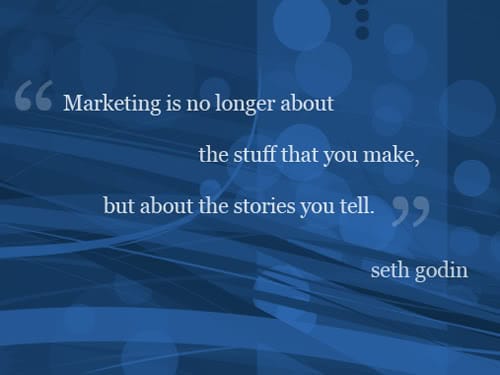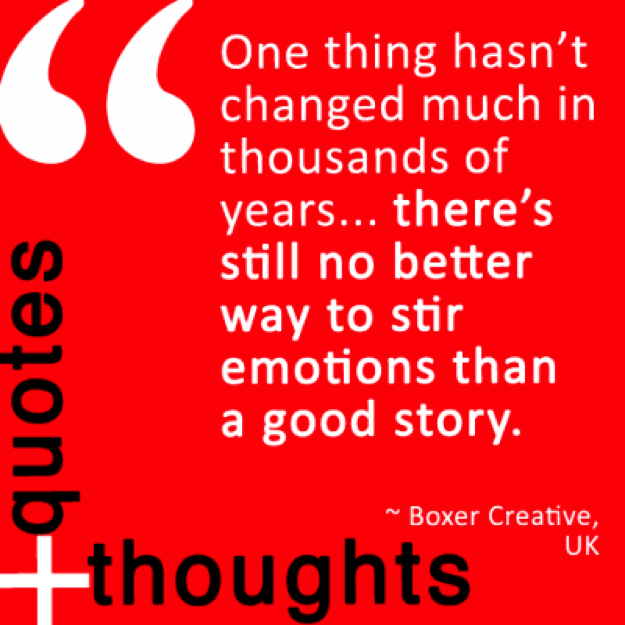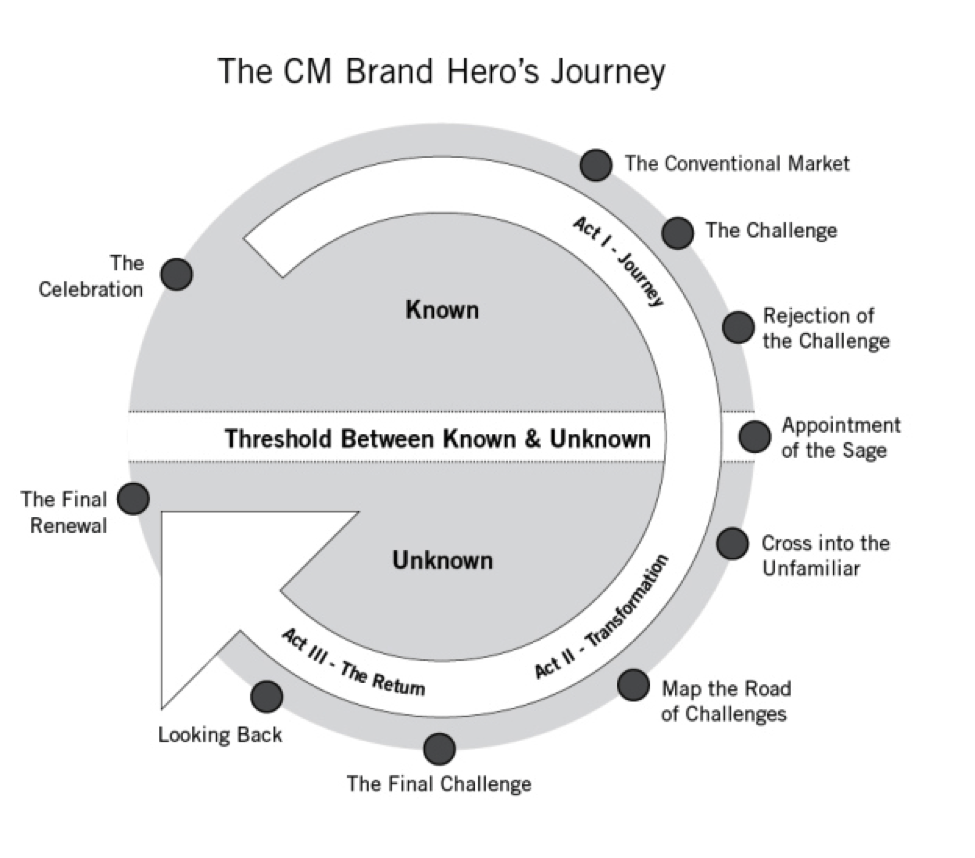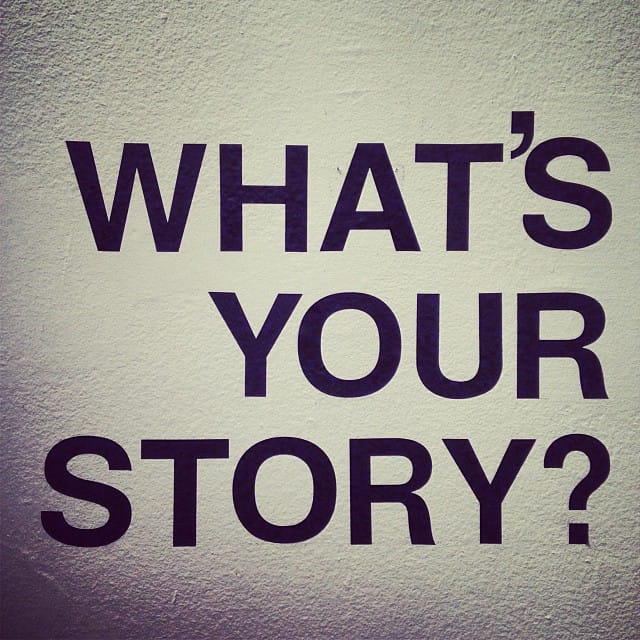15 Storytelling Techniques for Amazing Brand Story
The About Us page is one of the most visited pages of your website. But what happens after visitors land on it–do they stay on your site, look at your offerings, contact you for more information? Or do they disappear?
Part of the trick to keeping visitors and turning them into leads is to tell a powerful brand story, one that grabs and holds their attention like a great novel or movie. If you’re having trouble using stories in marketing, try these 15 storytelling techniques to help you write a better brand story.

1. Take the time to prepare
You’ll use your brand story everywhere–blog posts, ebooks, videos, networking, speeches, elevator pitches, sales calls, even your business plan. The list is endless. Before writing any of those materials, you prepare what you want to say and how you want to say it. Why would you treat your brand story any differently?
Write your brand story the same way you’d write a blog post or speech: with lots of careful planning and preparation. That means verifying details and gathering lots of information about the history of your brand, such as dates, quotes, personal anecdotes, and the specific motivations of founders and key executives. This storytelling technique ensures you have plenty to work with each time you tell the story.
2. Learn how to tell a good story
All the preparation and planning in the world will only get you so far if you don’t know anything about the art of storytelling. Make sure your story includes the basics of action, character, emotion, and imagery. Then refine it with these 22 elements of good storytelling.
3. Focus on the active struggle
A story that only shows what happens to the protagonist is boring. Stories that depict a character’s active pursuit–of justice, love, triumph–are far more interesting because the character actually does something. As the great playwright David Mamet said: “If the scene bores you when you read it, rest assured it will bore the actors, and will, then, bore the audience, and we’re all going to be back in the breadline.” Focusing on the activity, the drama of the story, is what keeps your audience engaged and interested.
4. Skip the slow parts
Because you’ll retell your brand story over and over, you won’t necessarily need to include every single detail every time. Telling the slower parts of the story at the wrong time or to the wrong audience can cause them to lose interest. Cherry-picking the best details for each retelling helps you keep their interest and keeps the story from feeling stale or old if they’ve heard it before.
Your About Us page, for example, might have more of the slow parts than an ebook or sales call because you have more room to tell them and visitors to that page specifically want to know more details than they can get anywhere else.
Consider each retelling individually, and ask yourself if each detail is critical to help this particular audience understand or do what you want them to.
5. Match your brand story to the format
Writing for the ear (e.g. sales calls, elevator pitches, videos, speeches) is not the same as writing for the eye (e.g. blog posts, ebooks, articles, ads). Adapting your storytelling to fit the format prevents the story from sounding wooden, generic, or rehearsed, and it strengthens the appeal to each different audience.
When writing your brand story for audio formats like videos and conversations, pay special attention to:
- volume and tone of voice
- facial expressions
- eye contact
- hand gestures
- pauses and pacing
When writing your brand story for text-based formats like blog posts and ebooks, pay special attention to:
- readability (small paragraphs, bullets, etc.)
- punctuation
- voice and style
- pace of the story
6. Control your pacing
Tell your brand story too slowly, and the audience will lose interest. But go too fast, and they won’t be able to keep up. It’s okay to speed up and slow down the pace of the story according to its tension as long as you can gauge your audience and keep them with you.
Pacing also applies to the speed at which you tell the story in person, when you must pace both the story itself and the way you tell it. This storytelling technique is critical in videos, speeches, sales calls, and elevator pitches, since your voice is the medium.

7. Make it personal
Don’t be afraid to mention your failings and problems. Doing so shows the people behind the brand, and your customers want to do business with people–not faceless corporations. In Warren Buffett’s 2014 shareholder letter, for example, he uses self-deprecation to liven up an otherwise dry communication and bond with his audience.
That bonding helps his audience get to know, like, and trust him, so they continue to invest with him. Brand loyalty and repeat purchases are the true power of personal stories.
8. Focus on the human element
The most powerful stories use emotion to connect with us on a human level. Facts and figures can be persuasive, but stories are memorable. In an Entrepreneur article on brand storytelling techniques, renowned storyteller and PR professional Kambri Crews recommends using emotional moments to help prospects connect with the product or service.
She points out how seeing a video of a child receiving a cochlear implant and hearing his mother’s voice for the first time is so much more powerful than citing research and case studies.
9. Make the stakes clear
In every story, there has to be some sort of conflict or tension. When you focus on what the characters in your story stand to gain or lose because of that conflict, you make them seem real and involve your audience emotionally. Readers and listeners become invested in the action and the characters of the story. They begin to root for the protagonist, wanting him to overcome the obstacles that threaten him.
Focusing on the stakes involved in your brand story can also help you develop and promote your unique selling proposition, emphasizing the problem your customers have and how you came up with a new and better solution.
10. Follow a classic story pattern
If you don’t know where or how to start, a storytelling technique that can help is employing a tried-and-true story pattern. Using recognizable patterns and archetypes helps both you and your audience know what comes next. While this can sometimes make the story a bit predictable, these patterns are classics for a reason.
The most common story patterns are:
- the hero’s journey
- the quest, journey, or adventure
- coming-of-age or discovering oneself
- personal triumph
- historical events/facts
- meet the guru

Here are 6 more story patterns perfect for building your brand and inspiring customers and employees.
11. Throw in a surprise
One of the 15 storytelling techniques learned from 2013’s INBOUND Bold talks is to capitalize on the element of surprise. Having a unexpected premise or unforeseen plot twist holds your audience’s attention and makes you stand out from the competition.
12. Make sure you have a solid beginning, middle, and end
Breaking your story into these parts helps you remember the most important moments of the story, maintain continuity between tellings, and control pacing. The beginning must hook the audience, capturing their attention so they keep reading or listening. The middle maintains that interest through entertainment and possibly education, while the end wraps up the story and clearly calls your audience to action.
13. Avoid “moral of the story” endings
Truly powerful stories stay with us and allow us to draw our own conclusions. When you tell your audience what they should learn from the story, you take away their opportunity to consider what you shared and discover things for themselves.
Plus, when you bring up a specific lesson or moral, your brand story feels less like a compelling sales piece and more like a mildly interesting fairy tale–the exact opposite effect of what you want.
14. Use natural language
Audiences can tell when you recite a memorized pitch or use stilted, formal language. It comes off sounding false and forced, and results in losing their interest and attention. On the other hand, when you speak in a way that’s natural, both to you and your audience, you sound like a real person, giving your story a much stronger appeal.
Natural language means not letting an editor polish rough-but-real phrases or remove cliches if using them is natural to you and your audience. For example, New York Yankee shortstop Derek Jeter used natural language to maintain a conversational tone in the narrative of his recent retirement letter with phrases like “bunch of injuries”.
Of course, using natural language doesn’t mean publishing the first draft of your brand story without a editor’s review. It means telling the story in a way that’s true to your brand and your ideal customer. It means knowing your audience well enough to use language that speaks directly to them, and knowing your brand well enough to stay true to your mission, values, and brand personality.

15. Make the story visual
Audiences want to see the story as well as read or hear it. By painting a picture in the audience’s minds, visuals make your brand story more interesting and more memorable, and they make the people in the story more real. There are three ways to make your storytelling more visual.
Setting: When you focus on setting, it’s easier for listeners to imagine the where and when of the story. Was it inside or outside? Near a house, a business, a church, a park? Did the sun warm your face or the full moon illuminate the path? If you have the time, create the setting for your story. If you don’t have much time or space to convey the setting, choose the most important details.
Senses: Utilizing all the senses is another way to bring the story to life. It reinforces the setting and helps the audience use their imaginations. For each moment of the story, consider what you (or the main character) saw, heard, smelled, tasted, and physically felt. You won’t need to mention all 5 senses for every moment, but try to incorporate all of them throughout the story if possible.
Visuals: What kind of visuals you use in your brand storytelling depends on the format, but you should strive to use some kind of visual in every telling of your brand story. Photos, drawings, graphs, videos, slides, infographics, facial expressions, gestures–these all make your story interesting and memorable.
What storytelling techniques do you use to share your brand story? Please tell us in the comments below!

Comment (1)
Hello,Jonathan John
This insightful guide unveils 15 dynamic storytelling techniques, offering a treasure trove for brand builders. From compelling anecdotes to the power of relatability, each technique is a strategic tool for crafting an unforgettable brand narrative. The emphasis on emotional resonance, authenticity, and the art of simplicity resonates powerfully. Practical and inspiring, it guides marketers on a journey to captivate audiences and establish a lasting brand connection. An indispensable resource, seamlessly blending creativity and strategy, fostering the art of storytelling for brands that aspire to be truly memorable in the hearts and minds of their audience.